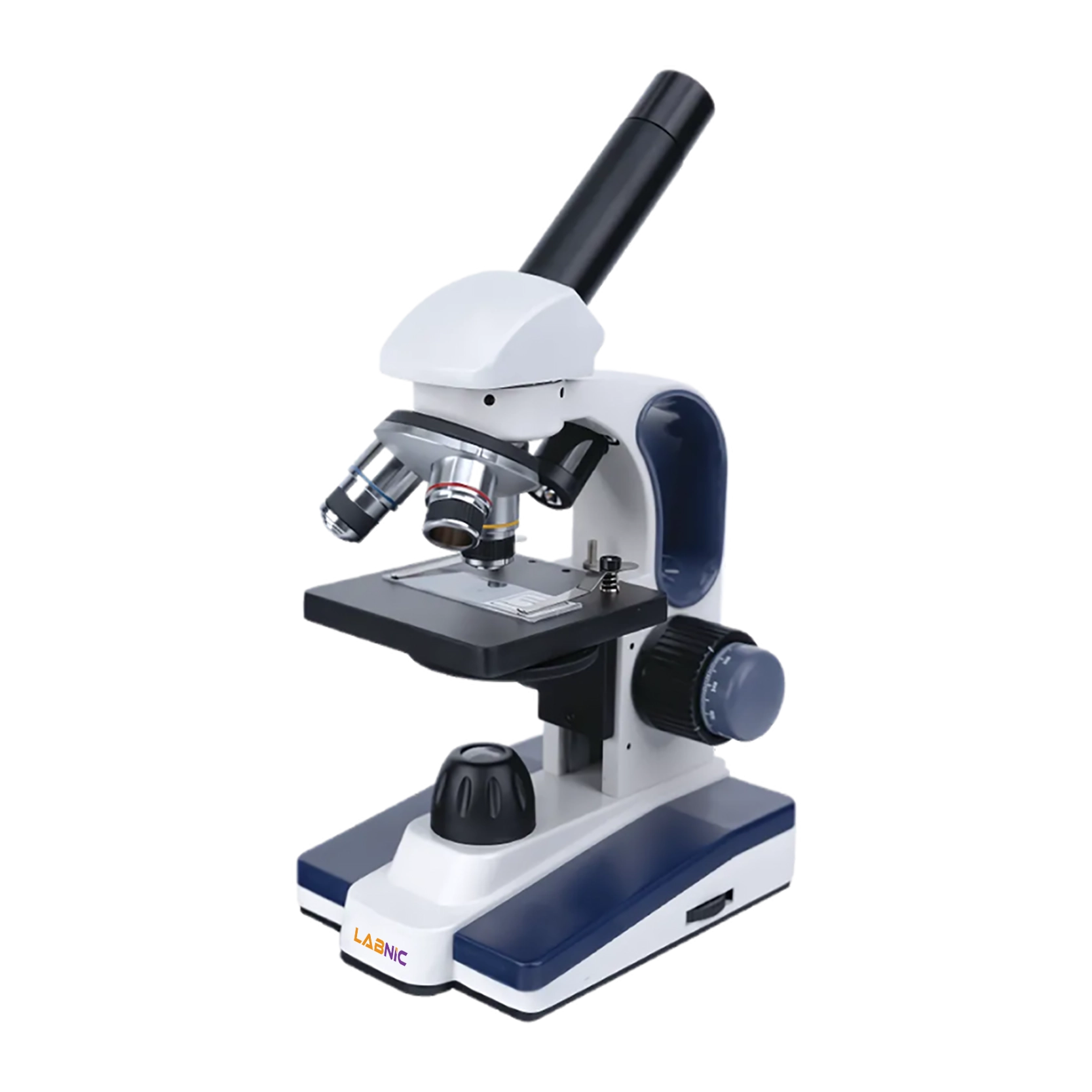
Biological Microscope LBN-BO123 is simple to use. It has a monocular head that rotates 360 degrees and is angled 45 degrees. With a single lens disc diaphragm condenser, it helps with both fine and coarse focusing of specimens. Its light source is an LED array. It consists of a triple-holed outward nosepiece and the WF10´ pointer eyepiece. Studies on biology are conducted using it. It is a crucial research tool for scientists.
| Optical Type | Achromatic |
| Standard Magnification | 40×-400× |
| Head Type | Monocular |
| Head Inclination | 45 degree |
| Head Rotation | Head Rotate 360 degree |
| Eyepiece Diameter | 23.2 mm |
| Eyepiece | WF10× with pointer |
| Nosepiece | 3 holes, outward |
| Objective | 4×, 10×, 40×(s) |
| Working Stage Type | 1 Layer +slide clip |
| Working Stage Size | 95 × 95 mm |
| Focusing Type | Coarse Coaxial & Fine |
| Condenser | 0.65 N. A |
| Light Source | LED |
| Power Supply | AC110V-220V |
| Dimensions (L × D × H) | 285 × 210 × 450 mm |
| Weight | 2.5/1.8 Kg |
Biological Microscope is used in biological research sectors, medical institutions, health clinics, scientific research laboratories, etc. for qualitative and quantitative research.
Biological Microscope is used in biological research sectors, medical institutions, health clinics, scientific research laboratories, etc. for qualitative and quantitative research.
Most Frequently Asked Questions
1. What is a Biological Microscope used for?
Ans. A biological microscope is used for observing biological specimens such as cells, tissues, and microorganisms. It is widely used in scientific research, medical diagnostics, and educational labs.
2. What kind of magnification do these microscopes provide?
Ans. They offer high magnification using optical lenses, which ensures clear and detailed visualization of microscopic samples.
3. Do these microscopes have adjustable lighting?
Ans. Yes, they come with adjustable illumination to provide consistent lighting, enhancing visibility during observation of transparent or low-contrast samples.
4. Is it easy to operate biological microscope?
Ans. Yes, these microscopes are designed for user-friendly operation, making them suitable for both beginners and professionals.
5. What types of specimens can be observed with this microscope?
Ans. You can observe a wide range of specimens including blood cells, bacteria, plant tissues, microorganisms, and slides of organs or tissues for research and diagnostic purposes.
Biological Microscope LBN-BO123 is simple to use. It has a monocular head that rotates 360 degrees and is angled 45 degrees. With a single lens disc diaphragm condenser, it helps with both fine and coarse focusing of specimens. Its light source is an LED array. It consists of a triple-holed outward nosepiece and the WF10´ pointer eyepiece. Studies on biology are conducted using it. It is a crucial research tool for scientists.